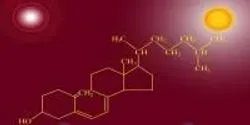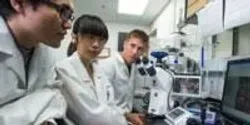Biological Sciences

Using a new imaging technique, National Institutes of Health researchers have found that the biological machinery that builds DNA can insert molecules into the DNA strand that are damaged as a result of environmental exposures. These damaged molecules trigger cell death that produces some human diseases, according to the researchers. The work, appearing online Nov. 17 in the journal Nature, provides a possible explanation for how one type of DNA damage may lead to cancer, diabetes, hypertension, cardiovascular and lung disease, and Alzheimer’s disease.

A Johns Hopkins University-led team links new organic carbon species in deep fluids to the formation of diamonds — and life itself.

New research from the University of Copenhagen and Copenhagen University Hospital shows that low blood vitamin D levels increase mortality. The study included 96,000 Danes and was recently published in the distinguished British Medical Journal.

Testing for ovarian cancer or the presence of a particular chemical could be almost as simple as distinguishing an F sharp from a B flat, thanks to a new microscopic acoustic device that has been dramatically improved by scientists at the U.S. Department of Energy’s (DOE) Argonne National Laboratory.

A couple of years ago a scientist looking at dozens of MRI scans of human brains noticed something surprising. A large, fiber pathway that seemed to be part of the network of connections that process visual information showed up on the scans, but the researcher couldn’t find it mentioned in any of the modern-day anatomy textbooks he had.
















